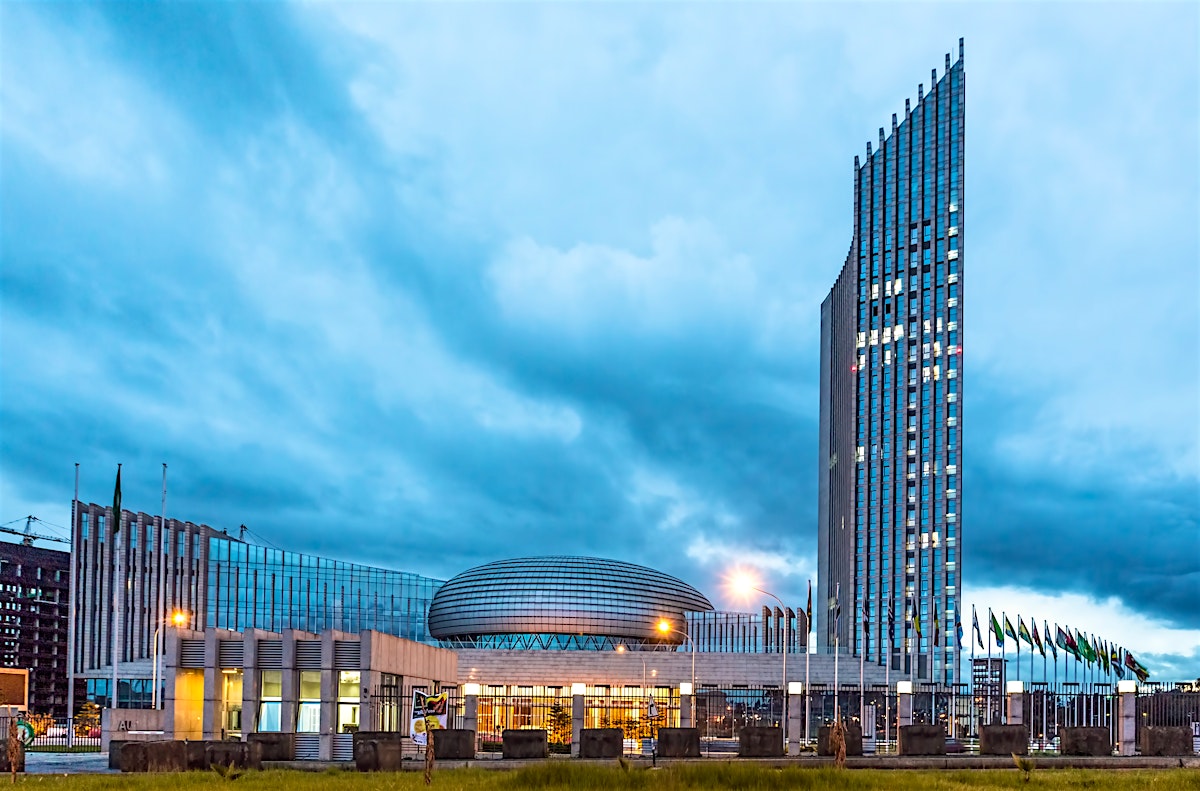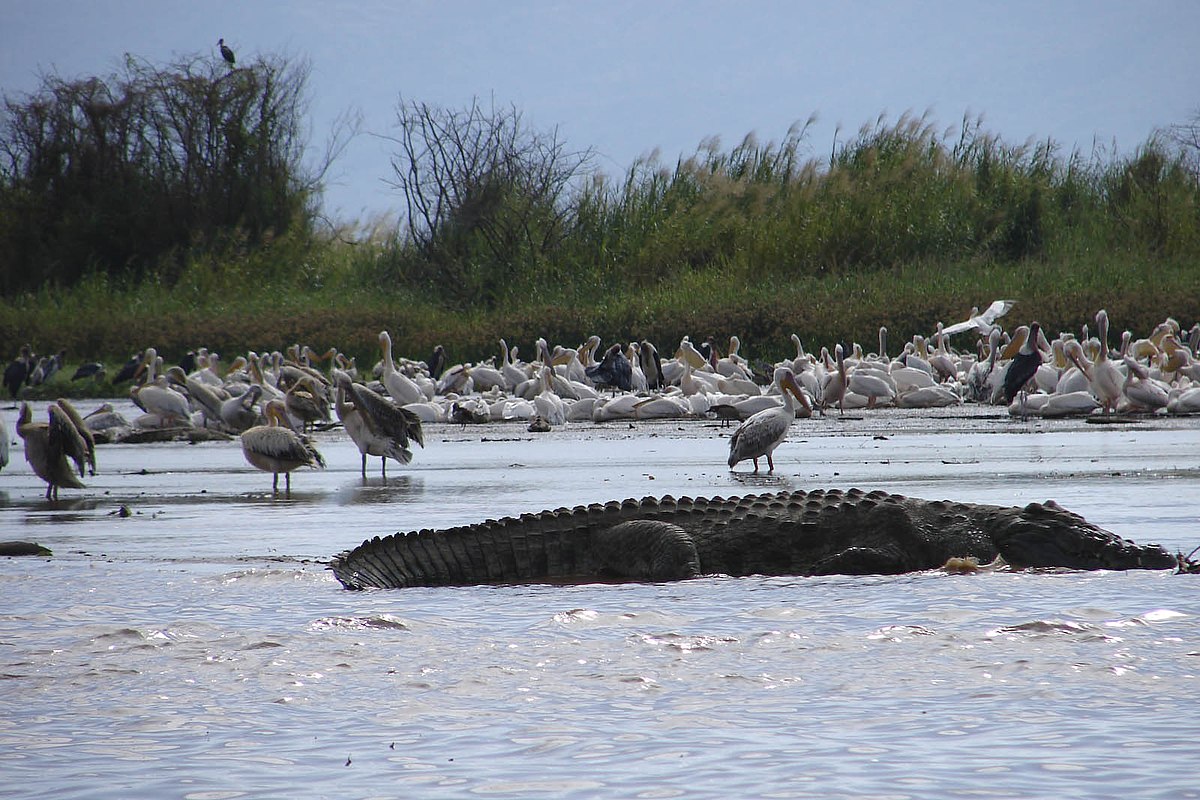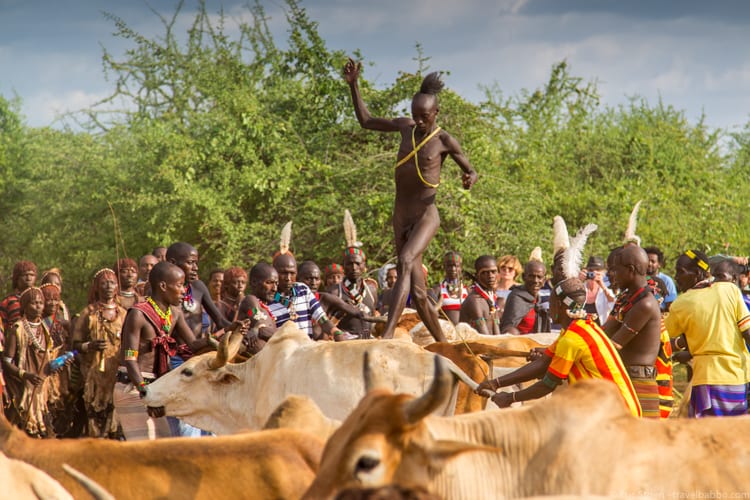Southern Ethiopia
14 Days/13 Nights
Tour Highlight
- Addis Ababa – The capital city of Africa
- Langano & Abyijta Shala National park
- Bale Mountain Trek
- Hawasa the beautiful city
- Arbaminch and Dorze traditional market
- Omo Valley & Different tribes

Day 01: Addis Ababa –– Arrival at Bole international airport or Hotel then for check in or if you are already check in then meet with our representative and you will have start a city tour of the Capital city Addis Ababa.It is established in 1886 by Emperor Menelik II and Empress Taitu. The main visiting attraction sites are,-
Entoto Mountain is the best location to observe from 3,000 meter high with the panoramic view of Addis Ababa. This place attracted Menelik II to build his capital until he was convinced by his wife Empress Taitu, to move the city to the lower parts where it is now located. On the top of this hill, stands St. Mary’s church built in 1885.
National Musium This museum exhibits the long history and culture of the country from prehistoric times. The 3.5 million year old skeleton of Dinkinesh (Lucy), the oldest human in the world is also, exhibited in this museum. Other attractions are archaeological findings from the Axumite period starting from 1st B.C. dating back over 2000 years. Ceremonial costumes, battle dresses and artifacts from different parts of the country are also, exhibited.
Ethnographic Museum, this museum is an ideal place to start learning about Ethiopia’s rich ethnic diversity,with its two main sections covering local crafts and on regions and people.
Trinity Cathedral was built in 1941 and it is the largest and most magnificent of all modern churches in the country; ornamented with carvings and mosaics and other artistic works. The paintings of the saints and the apostles on stained glass can be seen.St George cathedral and also Merkato which is the biggest open air market in Africa.At the end of the day back to hotel.
Accommodation: Hotel

Day 02:to Lake Langano and Abijata,Shala – After breakfast Drive to Lake Langano then visit abijata,Shala National park all are rich with fish and birds, including many endemic species. The Lake of Langano is best manages as a place of tourism, It is the only beach Resort in Ethiopia. There are few resorts there offering comfortable accommodation, tasty food and sports facilities. Later in the afternoon; we can visit Shalla and Abijata National Park, and ostriches at the gate of Shalla – Abiajjata National park head office. At the two lakes, there are a number of springs so hot that locals boil maize in them. We then head towards Abiajjata Lake, where by this time of day the lakes shores will be pink from the thousands of both lesser and greater Flamingo’s which feed in the shallows. African Pochard, Avocet, Gull billed Tern and Pintail, Ruff and a variety of ducks are among other species to be seen.
Day 03: Lake Langano to Bale Mountain – Drive to Bale Mountains National Park. In Dinsho, search the trails for a variety of colorful birds, the mountain nyala, and Menelik’s bushbuck. Over night camping
 Day 04 – 05 Bale Mountains – The Sanetti Plateau is between 12,400 and 14,300 feet above sea level, and is home to Africa’s highest road, which passes close to the summit of Ethiopia’s second-tallest mountain. Home to seven endangered species of birds and among the highest densities of rodents in the world, the plateau attracts an array of raptors, including eagles and buzzards. They share this abundant food source with the plateau’s most celebrated resident, Explore the Sanetti Plateau by car. This is the best place in Ethiopia to view the Ethiopian Wolf. Overnight Camping.
Day 04 – 05 Bale Mountains – The Sanetti Plateau is between 12,400 and 14,300 feet above sea level, and is home to Africa’s highest road, which passes close to the summit of Ethiopia’s second-tallest mountain. Home to seven endangered species of birds and among the highest densities of rodents in the world, the plateau attracts an array of raptors, including eagles and buzzards. They share this abundant food source with the plateau’s most celebrated resident, Explore the Sanetti Plateau by car. This is the best place in Ethiopia to view the Ethiopian Wolf. Overnight Camping.
 Day 06: Bale to Lake Hawassa – starts with breakfast at the hotel, we ascend to the more lush Shashamene area of the Oromia Region, heading to Awassa in the Great Rift Valley. The capital of the southern region of Ethiopia, Awassa town lies on the shores of the scenic Lake Awasa. The lake attracts an abundance of birds, and hippos are common.
Day 06: Bale to Lake Hawassa – starts with breakfast at the hotel, we ascend to the more lush Shashamene area of the Oromia Region, heading to Awassa in the Great Rift Valley. The capital of the southern region of Ethiopia, Awassa town lies on the shores of the scenic Lake Awasa. The lake attracts an abundance of birds, and hippos are common.
Accommodation: Haile Resort or similar
 Day 07: Lake Hawassa to Arba Minch (Dorze tribe) – Begin the day with a stop at the Lake Awassa fish market, before travelling to Arba Minch, which means ‘forty springs’ in Amharic due to the numerous springs found in the area.
Day 07: Lake Hawassa to Arba Minch (Dorze tribe) – Begin the day with a stop at the Lake Awassa fish market, before travelling to Arba Minch, which means ‘forty springs’ in Amharic due to the numerous springs found in the area.
Driving up into the Gughe Mountains we visit the Dorze, a minority ethnic group known for its cotton weaving, carpentry and beehive huts. The huts, made entirely from local materials (bamboo, enset and other), reach up to two storeys tall, even featuring fireplaces. Dorze were originally warriors but today these hard-working people primarily weave clothes using colourful cotton.
Depending on timing, we may visit a local market, with market days in Dorze village on Mondays and Thursdays and in nearby Chencha on Tuesdays and Saturdays.
Accommodation: Paradise Lodge or similar
 Day 08: Lake Chamo to Jinka – This morning we take a scenic boat ride on Lake Chamo, located in the Great Rift Valley of Ethiopia, just south of Lake Abaya and Arba Minch. The plentiful Nile crocodiles in Lake Chamo are said to be some of the biggest in the world. Our boat trip allows us to see the resident crocodiles, hippos, and numerous birds, especially African fish eagle. Lake Chamo is one of the best places in Ethiopia for boat-based bird and wildlife watching. The local people can also be seen fishing in traditional boats on Lake Chamo, despite the crocodile infested waters.
Day 08: Lake Chamo to Jinka – This morning we take a scenic boat ride on Lake Chamo, located in the Great Rift Valley of Ethiopia, just south of Lake Abaya and Arba Minch. The plentiful Nile crocodiles in Lake Chamo are said to be some of the biggest in the world. Our boat trip allows us to see the resident crocodiles, hippos, and numerous birds, especially African fish eagle. Lake Chamo is one of the best places in Ethiopia for boat-based bird and wildlife watching. The local people can also be seen fishing in traditional boats on Lake Chamo, despite the crocodile infested waters.
Then we set off for Jinka, stopping in the market town of Key Afer, famous for its weekly market held every Thursday. The Key Afer Market is a bustling place where various dwindling tribes of the Omo Region come together to sell and buy goods. Ari, Tsemai, Hamar and Benna people can be seen mixing in the colourful marketplace – a great place for people watching. All kinds of goods are sold at the market, including crafts, jewellery and spices.
Then we drive on to Jinka, another market town in the hills of southern Ethiopia. We spend the next night in Jinka, the capital of the Debub Omo Zone inhabited largely by the Mursi people.
Accommodation: Eco-Omo Lodge or similar
 Day 09: Mursi Village & Jinka (Mursi tribe) – After breakfast on we embark on a day trip to Mago National Park, located about 34 km’s southwest of Jinka. Ethiopia’s youngest national park, Mago is famous for the traditional tribes living in and around the park – from Mursi, Aari, Benna and Hammer to Ngagatom, Karo and Kwegu ethnic groups.
Day 09: Mursi Village & Jinka (Mursi tribe) – After breakfast on we embark on a day trip to Mago National Park, located about 34 km’s southwest of Jinka. Ethiopia’s youngest national park, Mago is famous for the traditional tribes living in and around the park – from Mursi, Aari, Benna and Hammer to Ngagatom, Karo and Kwegu ethnic groups.
The best known of the tribes living in Mago are the striking Mursi with their distinctive body ornamentation (lip plates, piercings and facial painting). The Mursi women insert discs into their lower lips adding to their unusual appearance and style of dress – adorned with beads, strange and elaborate headdresses and scant beaded, leather clothes.

Donga Stick fighting – a sport and ritual the Suri/Surma take extremely seriously is stick fighting. In most cases, stick fighting is done so young men can find wives. It is a way for young men to prove themselves to the young women. To the Suri/Surma, the ideal time to stick fight is just after it rains.
Returning to Jinka, we visit the South-Omo Museum, for cultural insights into the diverse ethnic groups of Omo Valley, their disappearing rituals, customs and ways. If our stay coincides with market days (Tuesdays and Saturdays) we will also browse the local market in Jinka.
Accommodation: Eco-Omo Lodge or similar

Day 10: Jinka to Turmi (Hamer tribe) – drive south to the next market town in the lower Omo Valley – Turmi. A large population of Hamer (or Hamar)live in Turmi and after dinner at our hotel we head to a nearby village to interact with these fascinating people. We watch traditional dancing, called Evangadi, in the Hamar village and see the elaborate hairstyles, body scarification and beads worn by the women. The Hamer are cattle herders and subsistence farmers, living in unique huts, mostly in the Omo Valley Region.

The tribe is best known for it’s ceremony called the Jumping of the Bulls, a rite of passage for young men entering adulthood.
If day six is a Tuesday or Saturday we stop in Dimeka, the largest town of the Hamer, and visit the bustling market. One of the biggest and most interesting markets in the Omo Valley, the Hamer, Benna, Karo, Tsemai and Ari tribes can be seen trading and shopping here.
Accommodation: Buska Lodge or Turmi Lodge
Day 11: Turmi & Omorate (Desanech tribe) – Today we drive to Omorate, located along the eastern bank of the Omo River close to the Kenyan border. Crossing the Omo River by local boat we visit the Dasennech (or Dasenach) tribe living in the southernmost part of Omo Valley. As with other ancient pastoral tribes in the Great Rift Valley, the Dasenach place a high value on cattle, but unlike more northerly tribes the Dasenach survive in an inhospitable, dry environment.
After visiting the Dasennech we drive back to Turmi where we visit the market (only on Mondays) and spend time in a local village near the town. If there is a traditional ceremony, such as the famous Jumping of the Bulls, then we get to witness the Hamar rituals in practice.
Accommodation: Buska Lodge or Turmi Lodge
 Day 12: Murulle & Dus (Karo tribe) – This morning we set off for Murulle village and the Karo settlement of Dus.
Day 12: Murulle & Dus (Karo tribe) – This morning we set off for Murulle village and the Karo settlement of Dus.
The Karo use red ochre, charcoal, mud and a mixture of white chalk and animal fat to paint symbolic patterns and decorative markings on their faces and bodies. This striking and often extensive body art is intended to intimidate enemies, mark ceremonies and attract the opposite sex. Both sexes also practise scarification associated with courage and beauty. In Dus we see shuppa shelters, locals playing Karo board games and the public meeting place.We end the day back in Turmi where we witness a traditional ceremony or dancing.
Accommodation: Buska Lodge or Turmi Lodge

Day 13: Turmi to Konso & Arba Minch (Konso tribe) – Begin the day with breakfast, before we drive north to Konso and then Arba Minch. In Konso village we meet the agricultural tribe of the Konso, who cultivate cash and subsistence crops on terraces that reduce soil erosion. The Konso people have an interesting system of social hierarchy and practise a specific form of polygamy. The Konso are renowned for the carved wooden totems (called wakas) erected to mark the graves of leaders in honour of the dead.
Part of the arid Konso area has been declared a World Heritage Site home to a living cultural tradition some 400 years old. After visiting the Konso, we continue our journey back to Arba Minch.
Accommodation: Paradise Lodge or similar
Day 14: Arba Minch to Addis Ababa – On our final day, we have breakfast and return north to Addis Ababa, driving via Butajira at the foot of the Zebidar massif.This evening we get together for a celebratory dinner, enjoying a traditional buffet and local drinks in Ethiopian style. After our cultural dinner experience, it is time to say farewell and transfer you to the international airport for your onward travels.

